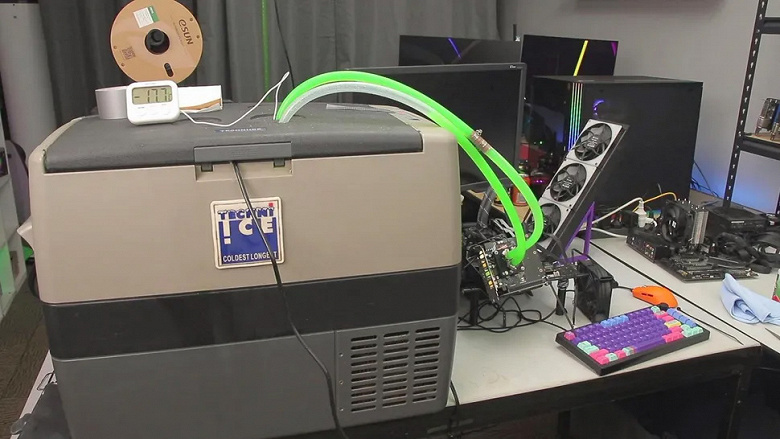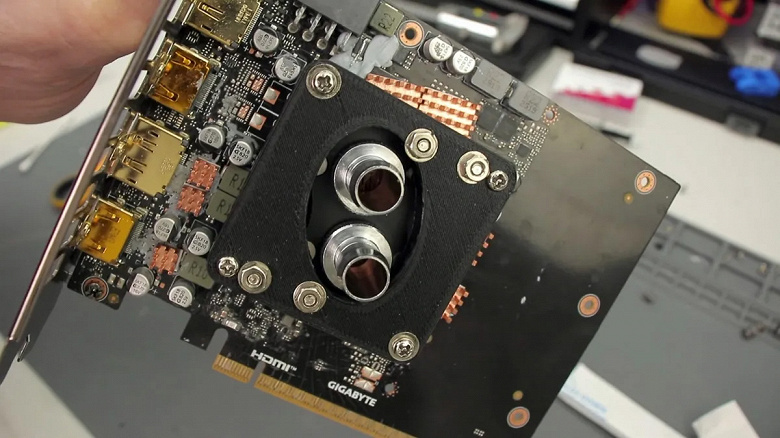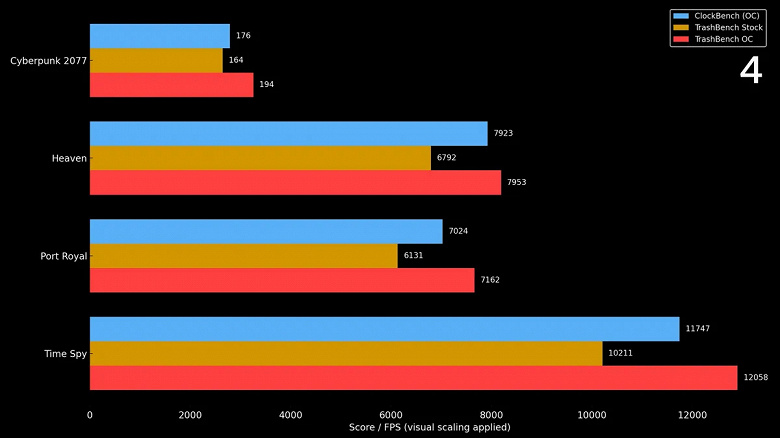Tom’s Hardware reported on the extraordinary achievement of the overclocking enthusiast Trashbench, who set a world record for RTX 5050 performance by pushing the GPU to a frequency of 3468 MHz using a car refrigerator. The overclocked card became the fastest GB207 GPU accelerator in the 3DMark rankings.

The standard frequency of the RTX 5050 stands at 2820 MHz, marking a 23% increase, a remarkable feat by modern GPU standards.

To bypass standard constraints, the overclocker applied a hardware shunt mod technique. This method involves bypassing sensors tracking the video card’s power consumption, resulting in the card no longer accurately assessing its load and being unrestricted by power consumption limits. The overclocking potential then hinges solely on voltage and cooling.

Instead of liquid nitrogen, Trashbench employed a car refrigerator, which housed the entire test platform. The cooling liquid used was essentially automotive antifreeze, based on ethylene glycol. This setup allowed maintaining the GPU temperature between -12°C and +15°C under different loads. Although the system showed a power consumption of only 78 W, these figures were clearly inaccurate due to the hardware modifications – the real power was significantly higher.
Innovative cooling techniques like this have gained traction in the overclocking community, providing newfound flexibility in extreme performance tuning. While traditional liquid nitrogen provides very low temperatures, using automotive systems offers a more stable and user-friendly alternative without rapid cold swings.
Nevertheless, environmental considerations remain a concern. Ethylene glycol, the primary component of many automotive antifreezes, is toxic and requires careful handling to prevent environmental contamination. Additionally, automotive refrigerators are not designed for sustained high-performance computing operations, potentially challenging their durability under continuous load stress.
Beyond individual feats, the RTX 50 series continues to solidify its market stance, with recent advancements focusing on efficiency and sustainability. As 2025 unfolds, industry analysts anticipate further breakthroughs in cooling technologies and overclocking methods that could redefine benchmarks yet again.









